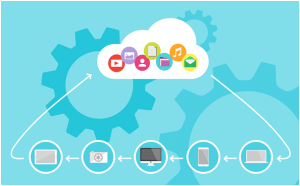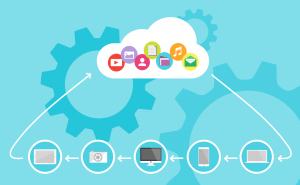IBM began the move towards autonomic computing way back in 2001.
What is autonomic computing?
Autonomic computing is the ability of a computer to manage itself automatically using adaptive technologies. This brings down the time the computer professionals spend in resolving system difficulties and maintenance concerns like software updates.
Autonomic computing is chiefly driven by the need to get rid of the obstacles caused by the system apart from cost reduction. The autonomic computing initiative developed by IBM advocates and demonstrates networking computer systems where human beings intervene only to define the input rules.
Autonomic System Characteristics
- A sense of self
- Can adapt to changes in the environment
- Can improve performance
- Can heal, if damaged
- Can defend itself from the attackers
- Anticipate user actions
- Communicates through the open standards
Autonomic computing is actually a vision initiated by IBM for building large scale distributed system without involving human interaction.
Why Autonomic Computing is Necessary?
With increased demand of computers, computer related concerns are also on the rise.
With the systems becoming more complex every passing day, there is a spike in demand for skilled workers too.
The need to handle computing operations with minimum manual intervention has impressed on the need of autonomic computing.
Autonomic System for IBM
According to IBM, autonomic systems are defined by the following conditions:
- Knows the resources it can access, its limitations and capabilities and the reason it is connected to other systems.
- Automatically configures or reconfigures itself depending on the environment.
- Optimises its performance ensuring efficient computing process.
- Works on issues and either repairs itself or finds a workaround.
- Detects, identifies and protects itself from different types of attacks, maintaining overall security and integrity.
- Adapts to environment, interacting with multiple neighbouring systems.
- Relies on open system, and cannot exist in proprietary environment.
- Anticipates demand on resource, while remaining transparent to users.
Autonomic computing is one of the most significant building blocks of a future computing model where we will be surrounded by tiny computers, communicating through an interconnected network.
Autonomic Computing Advantages and Disadvantages
Advantages
- Open source
- Evolutionary technology, capacitated to adapt to new changes
- Optimised, and can thus ensure more efficiency and performance, of course in little time
- Being secure, it can counter the system as well as security attacks
- Comes with a backup system, helping recovery from crashes and system failures
- Reduced cost of ownership as the system can maintain itself
- Can set up by itself, thereby reducing the time taken in handling things manually
Disadvantages
- Higher chances of malfunctioning or crashing
- Increased unemployment as manual intervention is not necessary
- Autonomic computing is expensive
- Skilled professionals are required to manage and develop such systems, thereby increasing the cost to company
- System operation depends on internet speed. In instances of slow connectivity, there will be performance issues
- Not available in the rural areas or areas that do not have proper internet connectivity.
Autonomic computing comes with the promise of simplified management of computing system, thereby ensuring a significantly more effective cloud computing.




